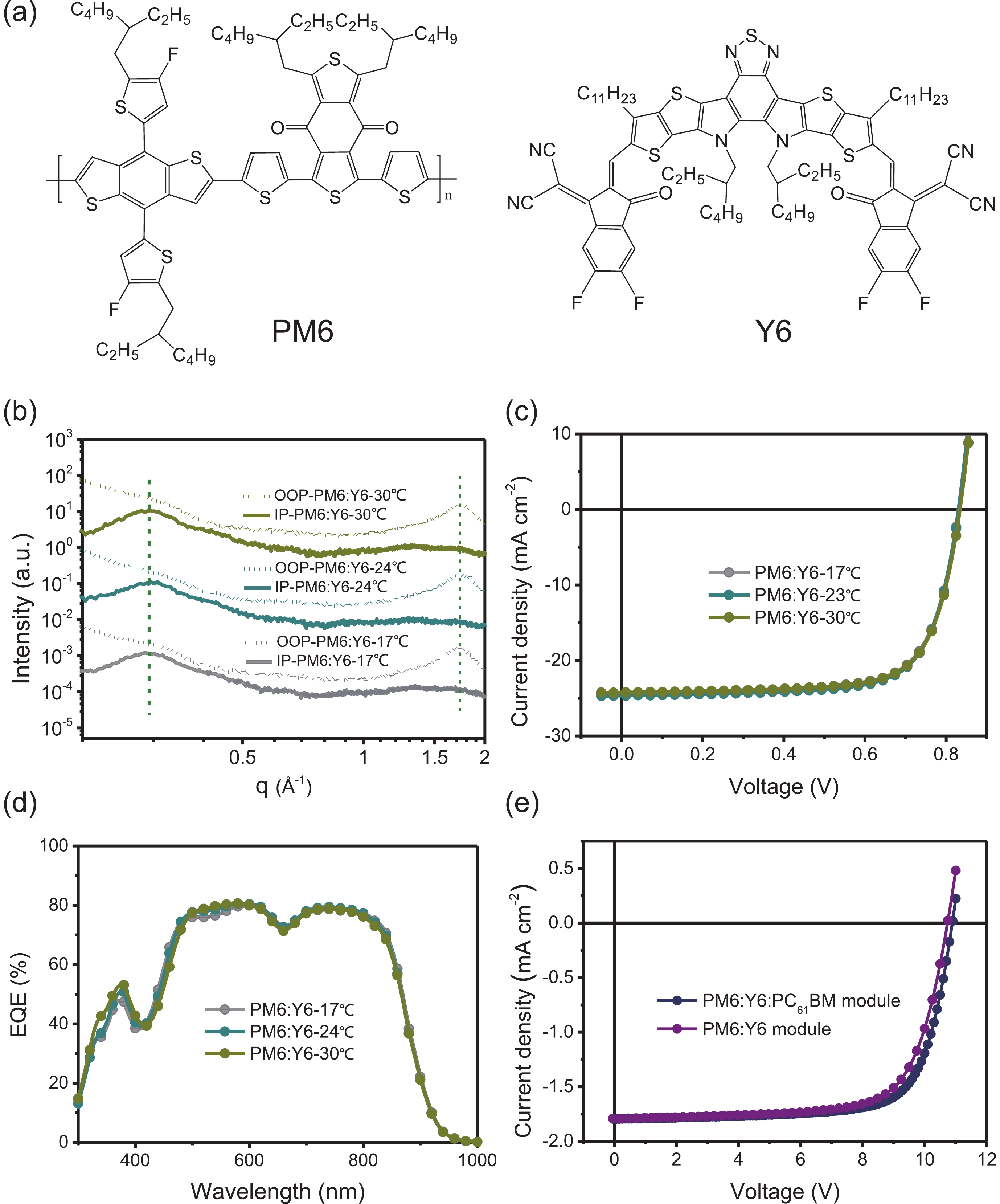| Citation: |
Erming Feng, Yunfei Han, Jianhui Chang, Hengyue Li, Keqing Huang, Lixiu Zhang, Qun Luo, Jidong Zhang, Changqi Ma, Yingping Zou, Liming Ding, Junliang Yang. 26.75 cm2 organic solar modules demonstrate a certified efficiency of 14.34%[J]. Journal of Semiconductors, 2022, 43(10): 100501. doi: 10.1088/1674-4926/43/10/100501
****
E M Feng, Y F Han, J H Chang, H Y Li, K Q Huang, L X Zhang, Q Luo, J D Zhang, C Q Ma, Y P Zou, L M Ding, J L Yang. 26.75 cm2 organic solar modules demonstrate a certified efficiency of 14.34%[J]. J. Semicond, 2022, 43(10): 100501. doi: 10.1088/1674-4926/43/10/100501
|
26.75 cm2 organic solar modules demonstrate a certified efficiency of 14.34%
DOI: 10.1088/1674-4926/43/10/100501
More Information
-
References
[1] Lin Y, Wang J, Zhang Z G, et al. An electron acceptor challenging fullerenes for efficient polymer solar cells. Adv Mater, 2015, 27, 1170 doi: 10.1002/adma.201404317[2] Yuan J, Zhang Y, Zhou L, et al. Single-junction organic solar cell with over 15% efficiency using fused-ring acceptor with electron-deficient core. Joule, 2019, 3, 1140 doi: 10.1016/j.joule.2019.01.004[3] Liu Q, Jiang Y, Jin K, et al. 18% efficiency organic solar cells. Sci Bull, 2020, 65, 272 doi: 10.1016/j.scib.2020.01.001[4] Qin J, Zhang L, Zuo C, et al. A chlorinated copolymer donor demonstrates a 18.13% power conversion efficiency. J Semicond, 2021, 42, 010501 doi: 10.1088/1674-4926/42/1/010501[5] Li P, Meng X, Jin K, et al. Banana-shaped electron acceptors with an electron-rich core fragment and 3D packing capability. Carbon Energy, 2022, in press doi: 10.1002/cey2.250[6] Meng X, Li M, Jin K, et al. A 4-arm small molecule acceptor with high photovoltaic performance. Angew Chem Int Ed, 2022, e202207762 doi: 10.1002/anie.202207762[7] Cao J, Yi L, Ding L. The origin and evolution of Y6 structure. J Semicond, 2022, 43, 030202 doi: 10.1088/1674-4926/43/3/030202[8] Cao J, Nie G, Zhang L, et al. Star polymer donors. J Semicond, 2022, 43, 070201 doi: 10.1088/1674-4926/43/7/070201[9] Ding L. Organic solar cells. Wiley, 2022[10] Zhu L, Zhang M, Xu J, et al. Single-junction organic solar cells with over 19% efficiency enabled by a refined double-fibril network morphology. Nat Mater, 2022, 21, 656 doi: 10.1038/s41563-022-01244-y[11] Zheng Z, Wang J, Bi P, et al. Tandem organic solar cell with 20.2% efficiency. Joule, 2022, 6, 171 doi: 10.1016/j.joule.2021.12.017[12] Distler A, Brabec C J, Egelhaaf H J. Organic photovoltaic modules with new world record efficiencies. Prog Photovoltaics Res Appl, 2021, 29, 24 doi: 10.1002/pip.3336[13] Guan W, Yuan D, Wu J, et al. Blade-coated organic solar cells from non-halogenated solvent offer 17% efficiency. J Semicond, 2021, 42, 030502 doi: 10.1088/1674-4926/42/3/030502[14] Li M, Wang J, Ding L, et al. Large-area organic solar cells. J Semicond, 2022, 43, 060201 doi: 10.1088/1674-4926/43/6/060201[15] Pan W, Han Y, Wang Z, et al. Over 1 cm2 flexible organic solar cells. J Semicond, 2021, 42, 050301 doi: 10.1088/1674-4926/42/5/050301[16] Sun R, Wu Q, Guo J, et al. A layer-by-layer architecture for printable organic solar cells overcoming the scaling lag of module efficiency. Joule, 2020, 4, 407 doi: 10.1016/j.joule.2019.12.004[17] Zhang B, Yang F, Chen S, et al. Fluid mechanics inspired sequential blade-coating for high-performance large-area organic solar modules. Adv Funct Mater, 2022, 32, 2202011 doi: 10.1002/adfm.202202011[18] Zhang L, Yang S, Ning B, et al. Modulation of vertical component distribution for large-area thick-film organic solar cells. Sol RRL, 2022, 6, 2100838 doi: 10.1002/solr.202100838[19] Guo X, Li H, Han Y, et al. Fully doctor-bladed efficient organic solar cells processed under ambient condition. Org Electron, 2020, 82, 105725 doi: 10.1016/j.orgel.2020.105725[20] Li H, Huang K, Dong Y, et al. Efficient organic solar cells with the active layer fabricated from glovebox to ambient condition. Appl Phys Lett, 2020, 117, 133301 doi: 10.1063/5.0021509[21] Yang Y, Feng E, Li H, et al. Layer-by-layer slot-die coated high-efficiency organic solar cells processed using twin boiling point solvents under ambient condition. Nano Res, 2021, 14, 4236 doi: 10.1007/s12274-021-3576-8[22] Jin K, Xiao Z, Ding L. 18.69% PCE from organic solar cells. J Semicond, 2021, 42, 060502 doi: 10.1088/1674-4926/42/6/060502[23] Meng X, Jin K, Xiao Z, et al. Side chain engineering on D18 polymers yields 18.74% power conversion efficiency. J Semicond, 2021, 42, 100501 doi: 10.1088/1674-4926/42/10/100501[24] Zhang G, Chen X K, Xiao J, et al. Delocalization of exciton and electron wavefunction in non-fullerene acceptor molecules enables efficient organic solar cells. Nat Commun, 2020, 11, 3943 doi: 10.1038/s41467-020-17867-1 -
Supplements
 2022100501suppl.pdf
2022100501suppl.pdf

-
Proportional views






 DownLoad:
DownLoad:
















